| Back to Back Issues Page |
 |
|
Dallying In The Dirt, Issue #116 --- Impatiens wilt has invaded my garden and I'm searching for the August 15, 2012 |
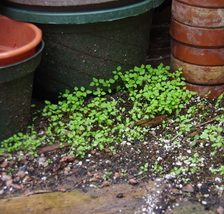
Here’s a little geography lesson for some of my readers. I just spent a wonderful 4 day weekend in Corner Brook, Newfoundland. Search your atlas to find this delightful corner of Canada. The only gardening I did was to water a couple of my daughter in law’s hanging baskets. The major activity was enjoying the four year old twin grandchildren. I think that the weeds back home in the garden are the only thing that is growing faster than those two. Upon our return, the garden was filled with ripe Tomatoes and Peppers and I could almost find them among the weeds. I was sure that I had just weeded that part of the garden before I left. We did, however, finally get some badly needed rain and apparently the weeds were sitting anxiously awaiting the water as much as all of the other plants. I realize that I do seem to go on about the weeds but they just seem so much worse this year. That’s probably because I have spent less time chasing them than I usually do. Pulling weeds all day when it’s 37̊ C just doesn’t have that much appeal. On my potting bench there was little pile of soil leftover from some transplanting activity and when I went back out there, after our little sojourn, it was very disheartening to find that whole little mound solidly green from the mass of weed seeds that had found that soil and germinated in it. 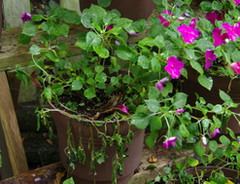 Several strange things have been happening in the garden this year that I can only attribute to the rather extreme weather. I’m not alone in wondering what is happening to my Impatiens. One day they appear to be perfectly healthy and then suddenly they have totally collapsed, rotted off, right at soil level. There can be three plants in a container and one of them will drop while the others carry on. In some of the containers all three eventually die but so far one or two seem to carry on quite well. The research that I have been able to do seems to indicate a bacterial infection that displays these symptoms. Apparently when I cut one of these infected stems I should see a thick yellow ooze and I have not been able to really see this. The bigger question is, where did this come from this year, when I have been growing Impatiens in these containers for several years. As for a cure, it’s clean up and discard the infected plants, sterilize or eliminate the soil and better luck next year. Did the wind or some other agent bring this in or did the plants come from the nursery already infected. There appears to be very little research about this, that addresses its sudden and somewhat wide spread appearance this year. I will keep looking or if any of you have more definitive answers please share them.
Several strange things have been happening in the garden this year that I can only attribute to the rather extreme weather. I’m not alone in wondering what is happening to my Impatiens. One day they appear to be perfectly healthy and then suddenly they have totally collapsed, rotted off, right at soil level. There can be three plants in a container and one of them will drop while the others carry on. In some of the containers all three eventually die but so far one or two seem to carry on quite well. The research that I have been able to do seems to indicate a bacterial infection that displays these symptoms. Apparently when I cut one of these infected stems I should see a thick yellow ooze and I have not been able to really see this. The bigger question is, where did this come from this year, when I have been growing Impatiens in these containers for several years. As for a cure, it’s clean up and discard the infected plants, sterilize or eliminate the soil and better luck next year. Did the wind or some other agent bring this in or did the plants come from the nursery already infected. There appears to be very little research about this, that addresses its sudden and somewhat wide spread appearance this year. I will keep looking or if any of you have more definitive answers please share them.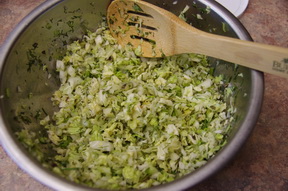 It is truly fascinating observing what does well and what does not in any given season. Even amongst the many Cruciferous crops that we grow in the vegetable garden there are amazing differences. The Cauliflower has done nothing except grow huge leaves. The Broccoli has struggled but put up a few meals. Both of those are, of course, trying to go into their flowering cycle. The green Savoy Cabbage has been wonderful and we have had several great tubs of Cole Slaw already this year. Cabbage is, of course, not trying to flower but just to have great vegetative growth. Interestingly the Red Cabbage has been somewhat less successful. Always interesting, no matter how many years I’ve spent trying to learn and understand the vagaries of gardening., It was the great Vita Sackville-West that famously said, “The more I garden, the more I learn, the more I learn, the more I realize how little I know.”
It is truly fascinating observing what does well and what does not in any given season. Even amongst the many Cruciferous crops that we grow in the vegetable garden there are amazing differences. The Cauliflower has done nothing except grow huge leaves. The Broccoli has struggled but put up a few meals. Both of those are, of course, trying to go into their flowering cycle. The green Savoy Cabbage has been wonderful and we have had several great tubs of Cole Slaw already this year. Cabbage is, of course, not trying to flower but just to have great vegetative growth. Interestingly the Red Cabbage has been somewhat less successful. Always interesting, no matter how many years I’ve spent trying to learn and understand the vagaries of gardening., It was the great Vita Sackville-West that famously said, “The more I garden, the more I learn, the more I learn, the more I realize how little I know.”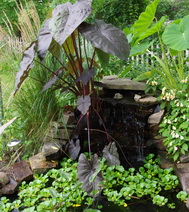 Most years I throw a couple of Water Hyacinths into each of my ponds and stand back and watch them slowly grow. Their roots are great bio filters that absorb and physically hold a pile of black particulate matter that would otherwise make the water cloudy. Apparently they like hot weather. This year, I have already removed two large bucket loads of water hyacinths from the top pond. I pulled them out because the entire surface of the pond was covered with their fleshy green growth. The grandchildren could not feed the fish because there was no open water to throw the food into. The fish are well trained and come to the surface at the approach of a five year old and gobble up the food that is tossed in. The soft fleshy growth of Water Hyacinths does make great compost and that is a minor benefit of their rampant growth this year. The Colocasia that hangs in the flow of the waterfall has also be making spectacular growth.
Most years I throw a couple of Water Hyacinths into each of my ponds and stand back and watch them slowly grow. Their roots are great bio filters that absorb and physically hold a pile of black particulate matter that would otherwise make the water cloudy. Apparently they like hot weather. This year, I have already removed two large bucket loads of water hyacinths from the top pond. I pulled them out because the entire surface of the pond was covered with their fleshy green growth. The grandchildren could not feed the fish because there was no open water to throw the food into. The fish are well trained and come to the surface at the approach of a five year old and gobble up the food that is tossed in. The soft fleshy growth of Water Hyacinths does make great compost and that is a minor benefit of their rampant growth this year. The Colocasia that hangs in the flow of the waterfall has also be making spectacular growth.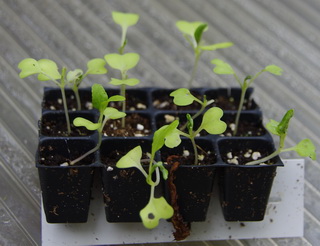 In the cold frame are a bunch of seedlings ready to be transplanted. I would normally put these into cell paks but I am contemplating putting these seedlings directly into the garden. These little Broccoli, Cauliflower, Kohl Rabi and Pak Choi plants might benefit from not being transplanted twice. They are being planted now in the hope that we will have a cooler fall and they will thrive and feed us until some very hard freezes in the early winter. They all love cool conditions and as such, make much better fall crops than they do summer ones. If we could just organize to have the days stay longer then they would do even better.
In the cold frame are a bunch of seedlings ready to be transplanted. I would normally put these into cell paks but I am contemplating putting these seedlings directly into the garden. These little Broccoli, Cauliflower, Kohl Rabi and Pak Choi plants might benefit from not being transplanted twice. They are being planted now in the hope that we will have a cooler fall and they will thrive and feed us until some very hard freezes in the early winter. They all love cool conditions and as such, make much better fall crops than they do summer ones. If we could just organize to have the days stay longer then they would do even better.
Time to answer a few questions. If you have a gardening question just ‘reply’ to this newsletter and send me your query. I try to answer most of the questions and the ones that I answer here are those that I think will have the widest interest. You can also find the latest garden updates on the front page of gardening-enjoyed.com . |
| Back to Back Issues Page |
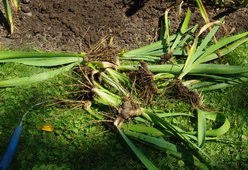 I have been trying to do some significant renovation to a few of the older beds. They are quite crowded and I have decided that I really don’t like some of the plants there. These beds are probably 12 - 15 years old and in the early days I was stuffing in whatever perennials I could find, just to fill them up. There are several, quite lovely
I have been trying to do some significant renovation to a few of the older beds. They are quite crowded and I have decided that I really don’t like some of the plants there. These beds are probably 12 - 15 years old and in the early days I was stuffing in whatever perennials I could find, just to fill them up. There are several, quite lovely